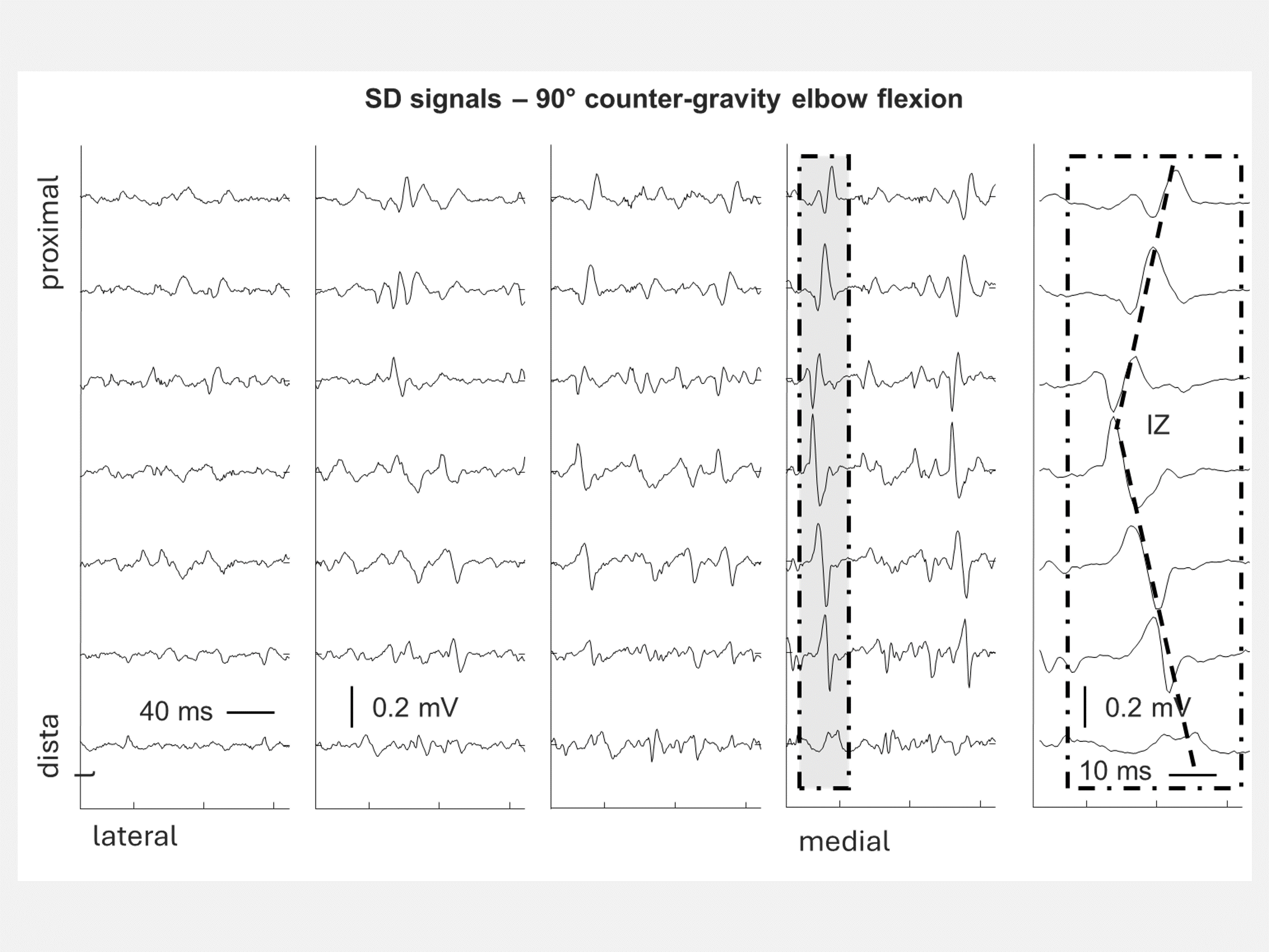Basic Physiology
Applications of ReC Bioengineering devices in the basic neurophysiology field

The MEACS system enables researchers to explore neuromuscular and cortical signals during both static and dynamic tasks, with high spatiotemporal resolution. Thanks to its capability to record HD-sEMG and EEG simultaneously in naturalistic settings it is possible to investigate motor unit behavior, proprioceptive feedback, sensorimotor integration etc.
As an example MEACS facilitated the examination of cortical responses to volitional muscle activation and proprioceptive afference, revealing the dynamic interplay between peripheral and central mechanisms [1], [2]. Similarly, MEACS was used in combination with ultrasonography to correlate mechanical and electrophysiological motor unit properties, shedding light on neuromechanical coupling between these variables [3-5].
MEACS system architecture and flexibility also support investigations in other fields related to basic neurophysiology such as nauromuscular fatigue, postural control, cortical reorganization. MEACS serves as a robust platform for understanding the physiological foundations of movement.
Bibliography from the LISiN-ReC group
[1] A. Giangrande, G. L. Cerone, A. Botter, and H. Piitulainen. “Volitional muscle activation intensifies neuronal processing of proprioceptive afference in the primary sensorimotor cortex: an EEG study”. Journal of Neurophysiology, 31: 28–37, 2024. doi: 10.1109/TNSRE.2022.3140220
[2] A. Giangrande, T. Mujunen, G. L. Cerone, A. Botter, H. Piitulainen, “Maintained volitional activation of the muscle alters the cortical processing of proprioceptive afference from the ankle joint”, Neuroscience, Volume 560, 2024, Pages 314-325, ISSN 0306-4522, https://doi.org/10.1016/j.neuroscience.2024.09.049.
[3] E. Martinez-Valdes et al., “Modulations in motor unit discharge are related to changes in fascicle length during isometric contractions,” J. Appl. Physiol., vol. 133, no. 5, pp. 1136–1148, Oct. 2022.
[4] M. Carbonaro, K. M. Meiburger, S. Seoni, E. F. Hodson‑Tole, T. Vieira, and A. Botter, “Physical and electrophysiological motor unit characteristics are revealed with simultaneous high-density electromyography and ultrafast ultrasound imaging,” Sci. Rep., vol. 12, no. 1, p. 8855, 2022, doi: https://doi.org/10.1038/s41598-022-12999-4.
[5] R. Rohlén, M. Carbonaro, G. L. Cerone, K. M. Meiburger, A. Botter, and C. Gronlund, “Spatially repeatable components from ultrafast ultrasound are associated with motor unit activity in human isometric contractions,” J. Neural Eng., vol. 20, no. 046016, 2023, doi: https://doi.org/10.1101/2023.04.17.537211.
[6]\ M. Thurston, M. Peltoniemi, A. Giangrande, I. Vujaklija, A. Botter, J.P. Kulmala, H. Piitulainen, “High-density EMG reveals atypical spatial activation of the gastrocnemius during walking in adolescents with Cerebral Palsy”, Journal of Electromyography and Kinesiology, Volume 79, 2024, https://doi.org/10.1016/j.jelekin.2024.102934.